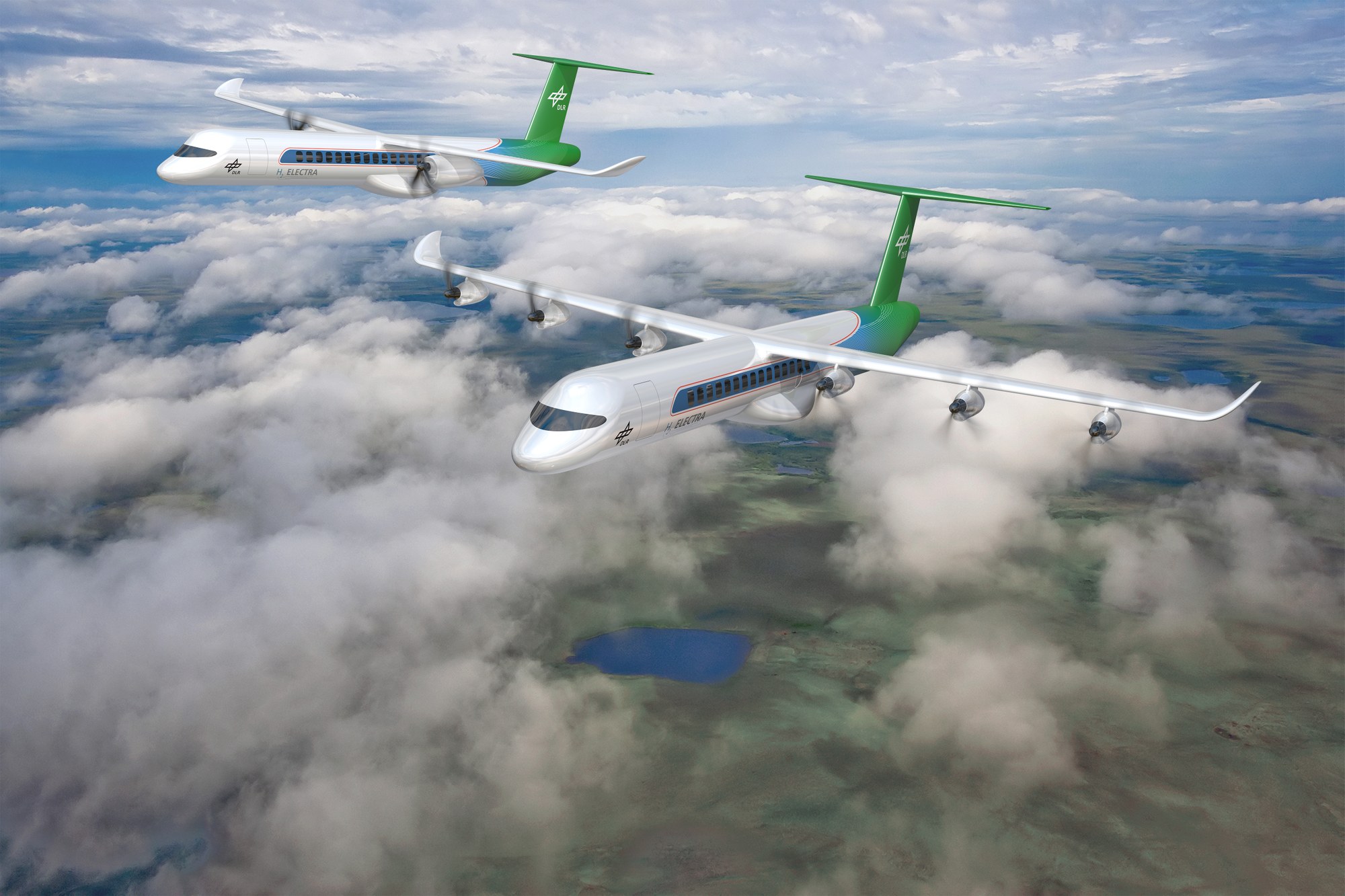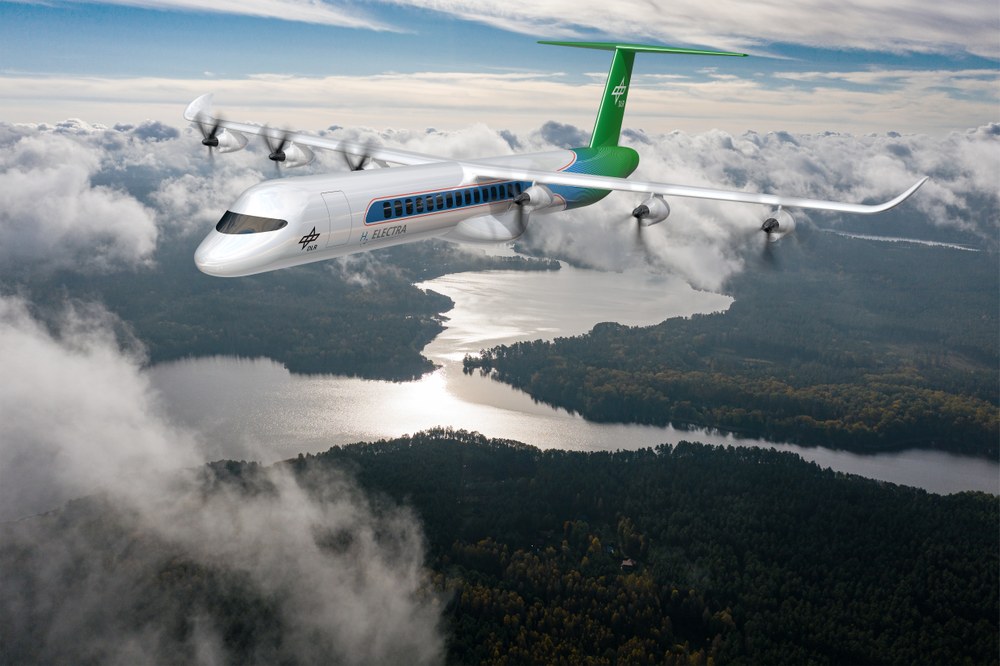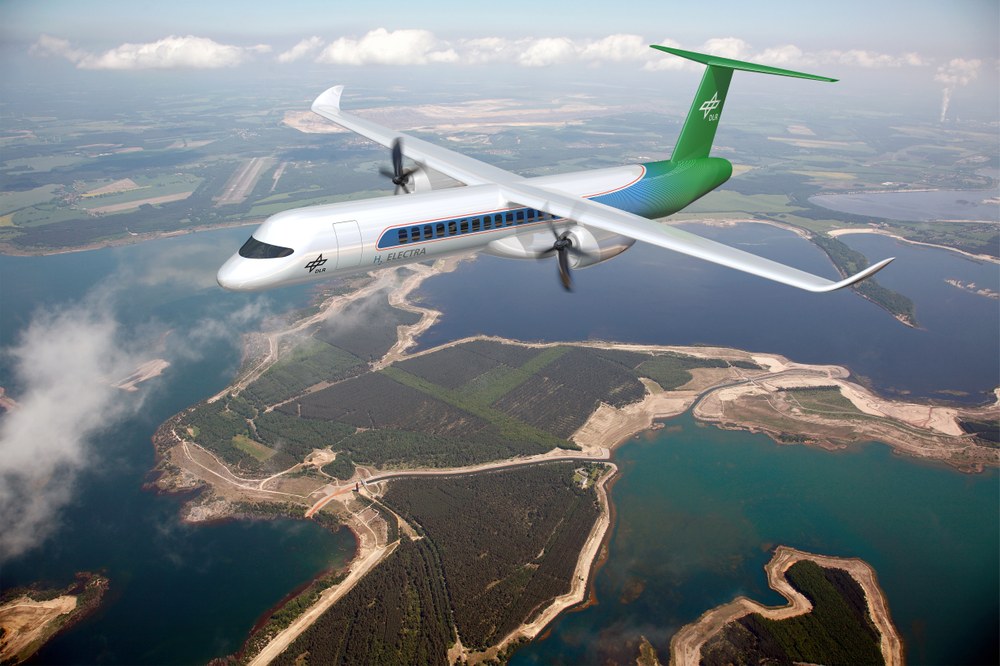H₂ELECTRA
The H₂ELECTRA model visualises the high technical complexity of novel propulsion systems and helps to answer research questions at DLR. For example, it shows the possibilities of operating a regional aircraft electrically with hydrogen.

About H₂ELECTRA
The aircraft is designed for a range of 1’000 nautical miles (approx. 1,850 kilometres) with 50 passengers, flies at a speed of Mach 0.5 (approx. 612 kilometres per hour) at an altitude of almost 5’000 metres with a payload of 6 tonnes (50 passengers * 100 kg + 1’000 kg cargo).
Future propulsion concepts offer new possibilities for aircraft design and integration. The model currently shows a fuselage integrated concept, where the energy storage and conversion components are located in the fuselage and the electrical energy is transmitted via cables to inverters and electrical motors driving six propellers and thus generating thrust.
Mission
A typical mission for such an aircraft involves transporting passengers and their luggage between cities. The H2ELECTRA is designed to carry up to 50 passengers and cover distances of up to 1’500 kilometres. Typically, this mission begins after the passengers have settled into their seats and the cargo has been safely stowed in the aircraft. The propulsion system is designed to provide sufficient power for each phase of the mission. The flight phases are: Taxi, take-off, climb, cruise, descent, landing and taxi to gate.

Alternative Configurations

The H2ELECTRA propulsion system is one possible configuration for a future propulsion system. Other configurations are conceivable and can be compared on this common platform. Possible solutions include stand-alone systems in which an energy carrier and an energy converter provide the required energy. One such system is the fuel cell, which is powered by hydrogen. Another is the battery system.
Another possible propulsion architecture is, for example, the nacelle-integrated propulsion solution shown on the right. Here, the components are mainly arranged along the wings or in the nacelle. This configuration also represents a possible future scenario for aviation.
Hybrid drive concepts can also be an attractive solution with a reduced environmental footprint. Here, electrical energy conversion systems such as fuel cells or batteries are combined with traditional technologies such as gas turbines or other combustion engines. The individual technologies are used intelligently, particularly through innovative energy distribution and operating strategies, and greater overall efficiency can be achieved.

